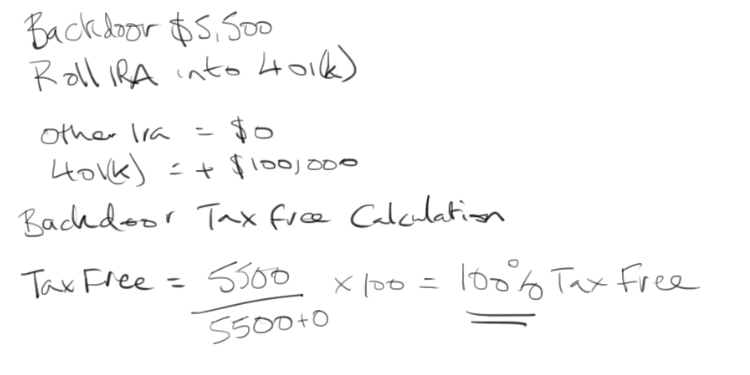One of the biggest frustrations to high earning people is how to build retirement assets when their income precludes them. Due to salary phases outs many tax incentives do not qualify for such earners, including the Traditional and the Roth IRAs. However, there is a way to create Roth IRA accounts using the Backdoor Roth method.
When describing such retirement accounts many people focus on the immediate tax events, but really the distinction is on the back end, when you distribute from them in retirement. Making this distinction allows you to understand the Backdoor Roth concept more easily. Traditional IRAs do offer a Tax Deduction for present year if you meet the salary requirements, but they still exist without the deduction if you do not.
- Traditional IRA distributions are taxed as regular income when you make qualified distributions from them in retirement.
- Roth IRA distributions are not taxed as regular income when you make qualified distributions from them in retirement.
When we look at IRS tables, there are income limits for contributions to both types of account – Traditional levels are lower than Roth levels. However, the important thing to remember is that the limits on the Traditional IRA apply only to the deductibility of present day taxes. If your income falls within the levels set out below, you do not need to worry about a Backdoor Roth. If you want a Roth, just contribute directly to it.
For the sake of clarity, I will not go into discussion on limits of IRAs here, I do recommend reading the resource on Roth IRAs in The Forum for more information on this.
Before you consider a Backdoor Roth, consider your other IRA’s
If you hold Traditional IRA’s and are planning a Backdoor Roth Conversion watch out – the IRS calculation for the conversion can kill the deal for you. The way the calculation works is they look at all of your Traditional IRA accounts in total, and proportionally rollover into the Roth, here’s an example where it can go wrong:
- You have a deductible IRA from 10 years ago that is worth $100,000
- You put $5,500 into creating a Backdoor Roth
The calculation for the transfer would work as follows:

In this example, because the person has another IRA already, there would be tax due on about 95% of the $5,500 conversion – this is because even though you want to convert the new money only, the IRS makes you think of all of it in one. So if you were in this scenario and attempted a backdoor Roth you would have to pay taxes on $5213.45 of the $5,500 that you converted!
Roll the old IRA’s into your company 401(k)
Because the IRS uses the sum of other IRA balances in this formula, if you were to remove them from the equation you can eliminate the impact of taxes. A way to do this is to roll your other IRA balances into your company 401(k) plan. Doing so allows you to honestly claim that you have zero IRA balances, and the formula for tax due would be calculated as follows:

If you are doing this, it is worth thinking about impact of investment choices of your work based plan – if you have few options that have high fees they will certainly impact the value of such a move.
Alternatively, you could just covert everything you have into the Roth – but that will incur a high taxable event in most cases as your income is putting you in a high bracket, and you will have tax due from the conversion. Perhaps worthwhile for de minimis account sizes.
Considerations aside – how to create a Backdoor Roth
Once you have decided if a Backdoor Roth is right for you, by reading the above and discussing it with your financial professional the implementation is really very simple:
- Contribute to a Traditional IRA
- When check has cleared/ACH arrived into the Traditional IRA, you immediately use those funds to buy a position in a Roth.
There are some tax reporting needs for this, and you can still trip up by using the wrong terms,so you really need to be working with a good CPA to help you do this correctly. And if you are earning over the Roth salary limits and are interested in saving taxes then you really should have a good CPA on your team, I wouldn’t recommend trying this strategy based on this post alone, and remember, if you have other IRA assets that you haven’t paid taxes on yet, proceed with extreme caution.
Nicely done Matt – most of these guides gloss over the total held in traditional IRAs.
One other case where this can make a lot of sense – if you live in a state with a very large marriage penalty that you can avoid by filing married separately. The income limit for contributions is around 10k then, so you can set up the backdoor Roth. Again, do a lot more research or hire a CPA if you are looking at this.
Very interesting point too, thanks!